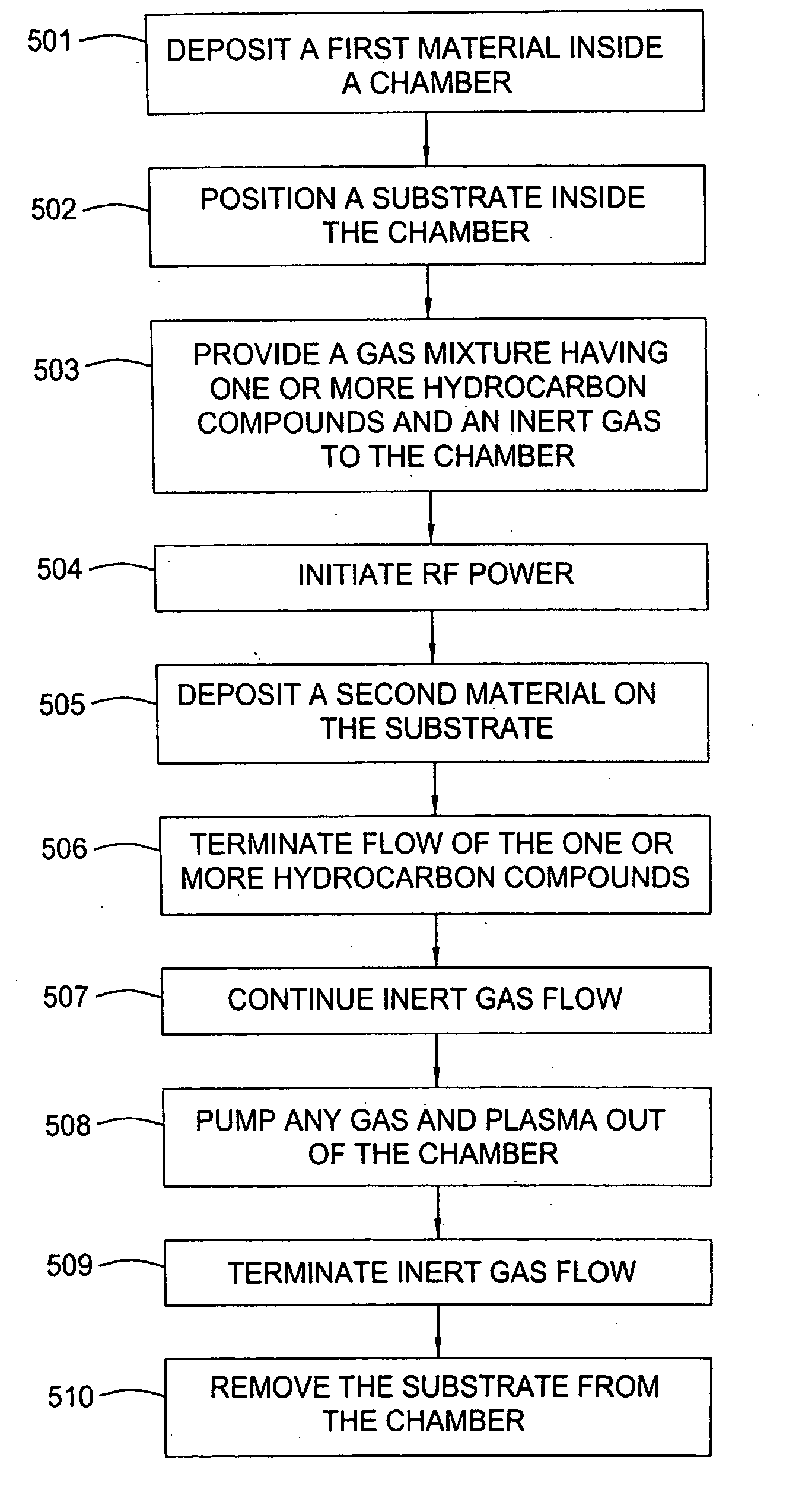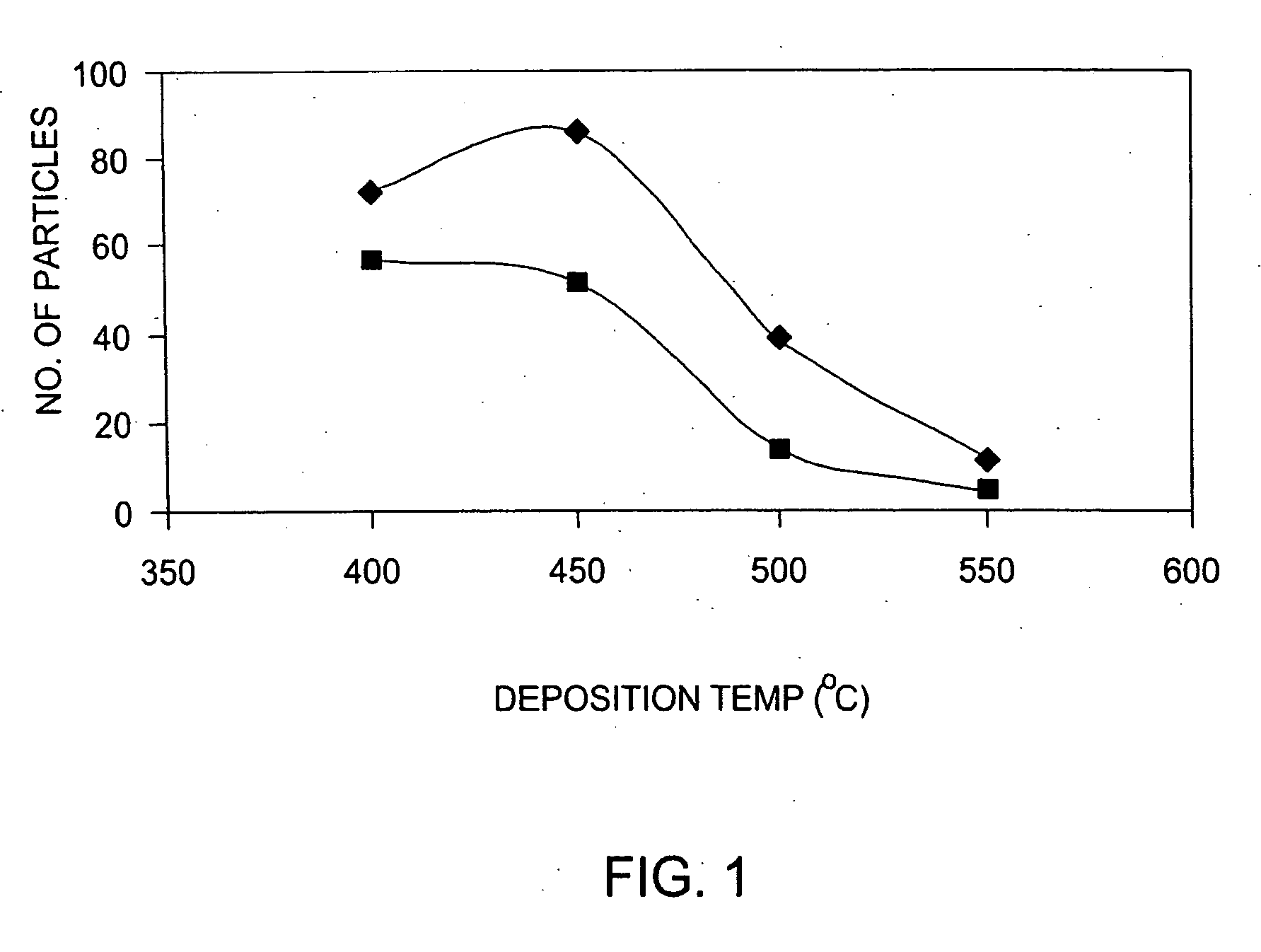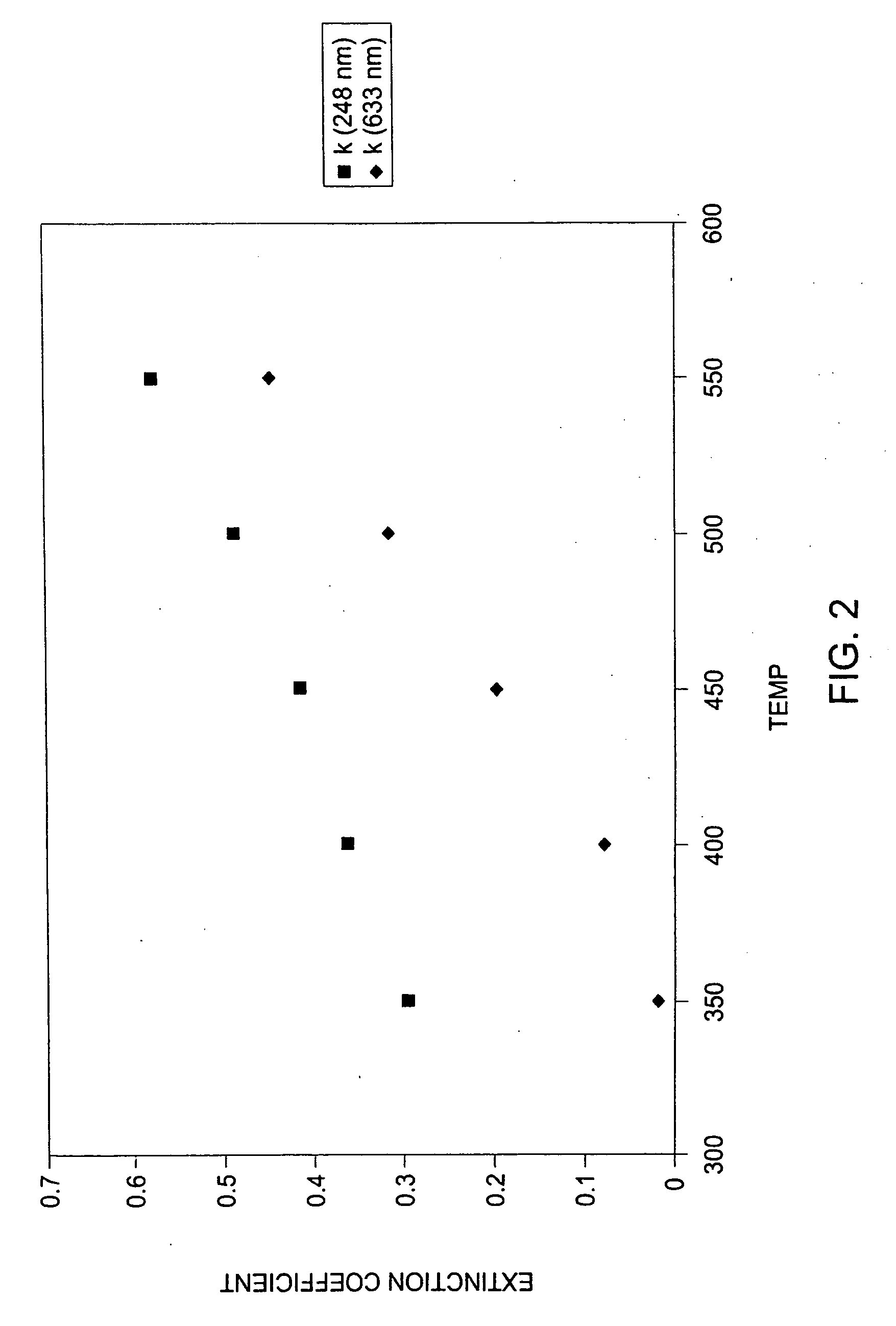Methods for the reduction and elimination of particulate contamination with CVD of amorphous carbon
a technology of amorphous carbon and cvd, which is applied in the field of manufacturing integrated circuits, can solve the problems of easy stripping and increase of particle contamination, and achieve the effects of reducing particle contamination, reducing particle contamination, and reducing particle contamination
- Summary
- Abstract
- Description
- Claims
- Application Information
AI Technical Summary
Benefits of technology
Problems solved by technology
Method used
Image
Examples
example 1
[0080] The chamber was pre-cleaned with an in-situ oxygen plasma by supplying an oxygen gas and initiating a RF power. A carbon film was then deposited inside the chamber at about 400° C. for a time period of 0, 5, 7, 10, 20, 30 seconds, or longer. This film is also called seasoning film. A substrate is loaded onto the substrate support of the chamber and an amorphous carbon layer was deposited on the substrate from a gas mixture of propylene and helium, having a chamber pressure of about 5.75 Torr and a substrate temperature of about 400° C. The substrate was positioned 250 mils from the gas distribution manifold, and RF power of 2.5 W / cm2 (1600 W) at a frequency of 13.56 MHz was applied to the manifold. The gas mixture described above was introduced into the chamber before the initiation of RF power. After the amorphous carbon layer was deposited on the substrate, the RF power and flow of the gas mixture were terminated. The chamber slit valve was opened to allow the gas mixture t...
example 2
[0082] Another example includes deposition of a carbon film at about 400° C. for a time period of about 10 seconds. The substrate was then introduced into the chamber and positioned 250 mils from the gas distribution system. A gas mixture of propylene and helium was introduced into the chamber before the initiation of RF power and an amorphous carbon layer was deposited on a substrate at a substrate temperature of about 400° C. After the amorphous carbon layer was deposited on the substrate, the RF power and flow of the gas mixture were terminated. The substrate was then positioned 1300 mils from the gas distribution system, while maintaining the chamber pressure. The chamber slit valve was opened to allow the gas mixture and / or plasma to be pumped out of the chamber. The numbers of the particles on the substrate were measured to see the effect of the position of the substrate from the gas distribution system on particle contamination.
[0083] The results are shown in FIG. 10, which ...
example 3
[0084] Still another example includes pre-cleaning the chamber with an in-situ oxygen plasma by supplying an oxygen gas and initiating a RF power. No carbon film was deposited before an amorphous carbon layer was deposited on a substrate from a gas mixture of propylene and helium at a substrate temperature of about 400° C. and RF power of 1600 W) at a frequency of 13.56 MHz applied to the gas distribution system. The flow of propylene was terminated while the flow of helium is still on for about 20 seconds. The substrate was positioned at about 250 mils from the gas distribution system. The chamber slit valve was opened to allow the gas mixture to be pumped out of the chamber. The numbers of the particles on the substrate were measured to see the effect of purging particles out of the chamber by the inert helium gas flow on particle contamination.
[0085] The results are shown in FIG. 12, which demonstrate that without maintaining the inert helium gas, particles more than about 0.12 ...
PUM
| Property | Measurement | Unit |
|---|---|---|
| Temperature | aaaaa | aaaaa |
| Temperature | aaaaa | aaaaa |
| Time | aaaaa | aaaaa |
Abstract
Description
Claims
Application Information
 Login to View More
Login to View More - R&D
- Intellectual Property
- Life Sciences
- Materials
- Tech Scout
- Unparalleled Data Quality
- Higher Quality Content
- 60% Fewer Hallucinations
Browse by: Latest US Patents, China's latest patents, Technical Efficacy Thesaurus, Application Domain, Technology Topic, Popular Technical Reports.
© 2025 PatSnap. All rights reserved.Legal|Privacy policy|Modern Slavery Act Transparency Statement|Sitemap|About US| Contact US: help@patsnap.com



